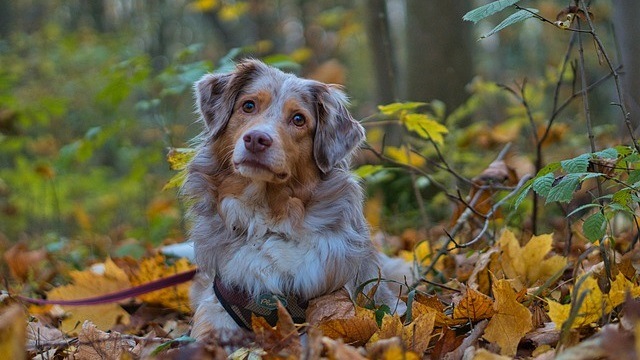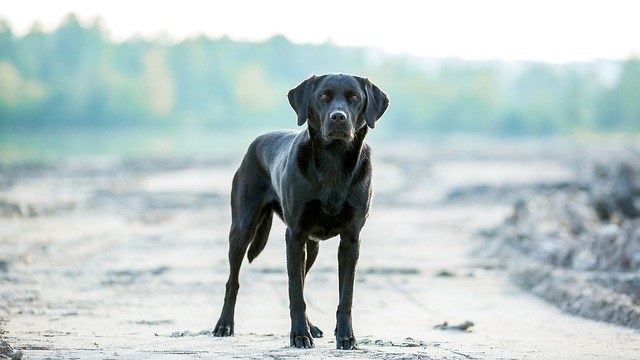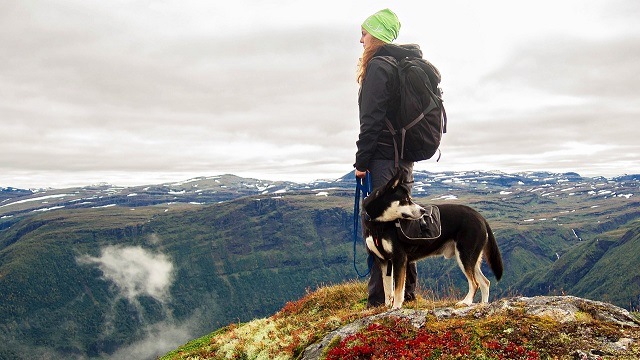What To Do When You Find A Lost Dog
Ever found a lost dog and been unsure as to what to do? What is the best course of action when we spot a dog wandering around the streets without their owner on the horizon? Well, we’re here to help! Here’s what to do when you find a lost dog.
There are some things that we can do and others that should not be done. Either way, unfortunately sometimes even the kindest soul may fail when attempting to help a lost dog… It will come down to the animal’s temperament, if they have ID or not, the owner’s efforts to find their buddy and, undoubtedly, it will also demand a stroke of luck.
- Prioritize your safety when approaching a lost dog; assess their body language carefully.
- Use treats and slow movements to gain the dog's trust if they seem friendly.
- If the dog is aggressive, do not attempt to grab them; contact local authorities instead.
- Post flyers and utilize social media to help reunite the dog with their owner.
Approaching the dog

Here’s the first thing to keep in mind regarding what to do when you find a lost dog: your safety always comes first! Only after it is guaranteed might you be able to help the dog. At this stage, knowing how to read a dog’s body language is an asset.
Never ever approach a dog in a sudden way. Always assess the situation with caution and try to win the dog’s trust.
-If they’re friendly:
If the dog seems relaxed and willing to have contact with you, that is your cue:
- Approach slowly, with your body turned to the side so you seem less intimidating.
- Dog treats or food are great unblockers. Tossing them on the floor is the safest way for you to earn the dog’s attention and trust.
- Squat and hold your hand out for the dog to smell it. Avoid looking directly into the dog’s eyes and doing sudden moves.
- Let the dog come to you first, and only then try to pet them on the side or bottom of their neck. Do not go directly for the head, as it can trigger a reaction from the dog.
- Check if there is a collar and an ID tag.
-If they’re not:
Alternatively, if the dog is wary of you and growls, cowards or shows any sign of aggressiveness, do not attempt to grab or restrain them. We strongly suggest that you call the nearest shelter, animal control or the police department. In the meantime, take a picture of the dog so you can provide an accurate description to the authorities in case the dog runs away.
Capturing the dog carefully

If you found a lost dog, you may feel compelled to take them in instead of leaving them vulnerable on the street. If their temperament and behaviour allows for you to safely do so, you can think about capturing and containing the dog.
Ideally you should use a leash, but in case you do not have one in hand, some rope will also do the job. If there is no ID tag, the next step is to check if the dog has a microchip.
Think about where you can hold the dog until you hear from the owner or you get them to the local shelter. A separate room at your home or a confined place in your yard will work just fine!
Do not let the new dog mingle with your own pets. It will be stressful and you never know how all of them will react. Besides, the rescue dog may have parasites like fleas and ticks, or infectious diseases that can be transmitted to your fellows.
Be aware that this situation might either be short or long term, and you will have to be prepared for that. In the eventuality of housing the new dog for a longer period of time, we strongly recommend that you take them to the vet just to make sure they’re healthy.
Dog ID

If the dog is friendly and has an ID tag with the owner’s phone number, it’s your lucky day! Unfortunately that is not always the case. Considering that you can take the dog to a shelter or the vet, the next stage is, as mentioned above, to have them scanned for a microchip. If they’re properly registered, the microchip will provide the owner’s contact details.
Some dogs are still tagged with a tattoo, so check the inside of the dog’s ear, inside of the thigh, or sometimes on the belly.
Tracking the owner

If you found a lost dog and managed to get the owner’s contact information, that’s great! In that case, the most direct way to reach out would be via mobile phone.
But what if no one picks up the phone, even after several attempts? Or what if there are no contact details, whether because the ID tag or microchip do not provide them, or because the dog has no ID at all? What to do when you find a lost dog in this less-than-ideal scenario?
Well, then it gets a bit more complicated… But don’t lose hope!
Go the old fashioned way and print and post tons of flyers in the neighbourhood where the dog was found. Include a picture of the dog, as well as your contact information. It’s also highly advisable to post on social media, and to browse lists of lost and found dogs. You can also leave flyers in local animal shelters and vets as well.
To cover a wider range of shelters and vet clinics, contact those a bit further away from the place you found the dog. Some dogs can roam long distances, so it’s better to cover all bases.
Spreading the word as much as you can will increase the chances of reuniting the dog with their owner.
Once a happy ending is accomplished, don’t forget to inform all the lost and found groups, shelters and vets! Also, remember to remove flyers and update any posts you made about the situation. It’s important to keep that information up to date all the time!
That’s it! We hope this post was helpful, and you’re now more confident regarding what to do when you find a lost dog!
Maven is all about proactive pet care. Be your best friend’s best friend by giving them 24/7, high-quality, industry-leading vet care to improve their mental health, physical health and more. No more frantic googling or unneeded stressful visits to the vet – Maven helps you save hundreds while also ensuring your pet lives the best life possible. Get your kit now!




